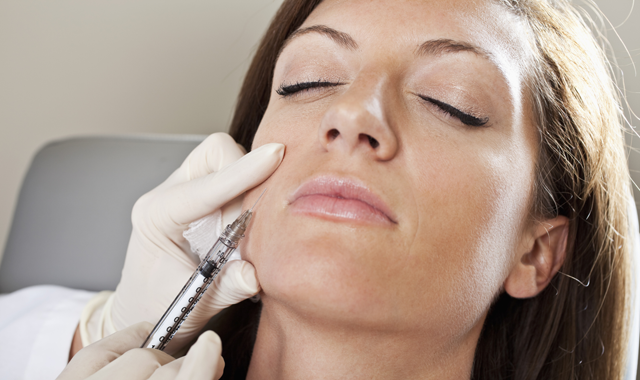Study finds Botox can relieve jaw muscle pain
According to new research, Botox therapy can provide significant relief with only a mild risk for negative effects.

Botox therapy can provide significant relief with only a mild risk for negative effects to patients with stubborn pain in the muscles involved in chewing, according to a new retrospective study.
Chemically known as botulinum toxin A, Botox is a protein made from bacteria that, when injected, stops nerve signals that command muscles to contract, resulting in a months-long decrease in muscle activity. It has been used to treat conditions such as muscle spasms, facial wrinkles, migraines and excessive sweating.
According to the study published in the November issue of the Journal of Oral and Maxillofacial Surgery – the official journal of the American Association of Oral and Maxillofacial Surgeons (AAOMS) – botulinum toxin A injections also may have pain-relieving properties.
To determine the therapy’s safety and effectiveness in treating stubborn jaw muscle pain, researchers conducted a retrospective review of 116 patients. The patients underwent at least two Botox injection cycles for refractory masticatory myalgia – pain in the muscles used for chewing – that had not responded to other therapies. The patients at the Department of Oral and Maxillofacial Surgery at Massachusetts General Hospital also had coexisting chronic pain disorders and were receiving other therapies and/or taking medications.
Read more: 4 things to remember about facial injectables
Nearly one-third of participants (30.6 percent) reported significant pain relief – defined as 75 percent or greater – for an average of 10.1 weeks.
“This is an important outcome for this particular cohort of participants, considering that 72.9 percent of the participants had been in pain for at least five years, with 60 percent or more receiving two or more concurrent therapies,” researchers wrote.
In addition, 39.8 percent of participants had moderate relief for 8.7 weeks on average, and 29.6 percent had no or minimal relief for 1.3 weeks on average.
Among the participants, 16.4 percent reported at least one negative effect during the two injection cycles. Those who had significant pain relief had the largest number of adverse effects at 30.3 percent.
The most common side effect was a decrease in the size of the masticatory muscle, possibly due to blocked release of a chemical that activates muscles, the study states. However, all of the negative effects were minor and brief, and full recovery occurred within 16 weeks.
Simultaneous use of opioid pain relievers was a predictor of no or minimal relief. Of the participants, 36 percent were using a long-term opioid therapy. Long-term opioid use can result in opioid-induced hyperalgesia – a painful response to the medications – and having chronic pain disorders can lead to diminished effect of pain relievers, researchers wrote. “Together, these factors may result in poor outcome and response to therapy,” they say.
The authors of “Effectiveness, Safety, and Predictors of Response to Botulinum Toxin Type A in Refractory Masticatory Myalgia: A Retrospective Study” are all from the Department of Oral and Maxillofacial Surgery at Massachusetts General Hospital: David A. Keith, DMD, BDS, Professor at Harvard School of Dental Medicine; Steven J. Scrivani, DDS, DMedSc, Chief, Division of Oral and Maxillofacial Pain; Nicole Holland, DDS, MS; and Shehryar N. Khawaja, BDS, MS, Post-Graduate Fellow at Harvard School of Dental Medicine.